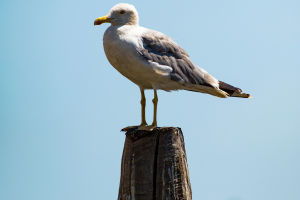Birds exhibit a remarkable diversity of forms and behaviors across the globe, captivating us with their unique appearances, behaviors, and habitats.
Here, we explore some of the most extraordinary avian species that highlight the wonder and diversity of nature.
1. Helmeted Hornbill
The Helmeted Hornbill, also known as the Great Indian Hornbill or Great Pied Hornbill, inhabits the rainforests of Southeast Asia and Indonesia. This large bird can grow up to 1.2 meters in length with a wingspan reaching 1.8 meters and weighing up to 3 kilograms.
Its striking black and white plumage contrasts sharply with its distinctive yellow and black "casque," a protrusion on its beak. This U-shaped casque, concave at the top and flanked by ridges, serves multiple functions including amplifying sounds, aiding in balance, and potentially enhancing its striking ability.
2. Vulture
Among the largest flying birds globally, vultures boast a wingspan of up to 3 meters and can weigh up to 9 kilograms.
They sport robust wings and sharp talons, but what sets them apart visually is their nearly featherless heads and necks adorned with a spectrum of colors including red, purple, pink, orange, blue, and yellow. These hues are thought to signal a mood or social status within vulture communities.
3. Kiwi
Endemic to select islands of New Zealand, the kiwi is a flightless bird renowned for its diminutive size—about 25 cm in length—and its unique appearance. Covered in brown or gray feathers resembling fur, the kiwi is distinguished by its elongated, flexible beak and unusually large, heavy eggs.
Remarkably, these eggs can account for up to 15% of the bird's body weight, making them the largest in proportion to body size among all bird species. The kiwi's beak, tipped with a sensory opening to detect underground insects and worms, underscores its strong olfactory capabilities.
4. Frigatebird
Found in tropical and subtropical regions worldwide, the frigatebird is a large seabird characterized by its expansive wingspan of up to 2.5 meters and deep black or dark brown plumage.
Male frigatebirds sport vibrant red or orange beaks and, notably, a massive, brightly colored throat pouch. During courtship displays, males inflate this pouch, which turns a vivid red or pink, creating a balloon-like structure that attracts females and emits a resonant, low-frequency sound.
5. Blue-footed Booby
Residing predominantly in the Galapagos Islands and the Gulf of Mexico, the blue-footed booby is a marine bird distinguished by its size—approximately 80 cm in length—and a wingspan of about 1.5 meters.
Clad in grayish-white or brown plumage with yellow or orange beaks, these birds draw attention primarily due to their striking blue feet. The intensity of the blue hue correlates with the bird's diet of carotenoid-rich foods.
Blue-footed boobies utilize their vividly colored feet in courtship rituals and gender identification, with females often preferring males displaying darker blue feet as a sign of genetic fitness.
In summary, these birds exemplify the astounding biodiversity found in nature, each species playing a crucial role within its respective ecosystem.
Their unique adaptations and behaviors not only captivate the imagination but also underscore the importance of preserving these remarkable avian species. By cherishing and safeguarding their habitats, we ensure that future generations can continue to marvel at the diversity and wonder of Earth's avifauna.


